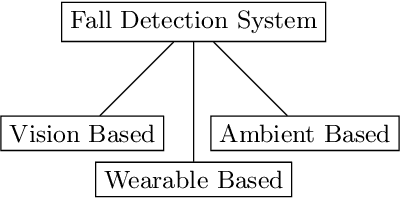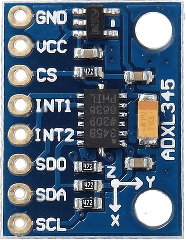Rishabh Mondal
Space to Policy: Scalable Brick Kiln Detection and Automatic Compliance Monitoring with Geospatial Data
Dec 05, 2024



Abstract:Air pollution kills 7 million people annually. The brick kiln sector significantly contributes to economic development but also accounts for 8-14\% of air pollution in India. Policymakers have implemented compliance measures to regulate brick kilns. Emission inventories are critical for air quality modeling and source apportionment studies. However, the largely unorganized nature of the brick kiln sector necessitates labor-intensive survey efforts for monitoring. Recent efforts by air quality researchers have relied on manual annotation of brick kilns using satellite imagery to build emission inventories, but this approach lacks scalability. Machine-learning-based object detection methods have shown promise for detecting brick kilns; however, previous studies often rely on costly high-resolution imagery and fail to integrate with governmental policies. In this work, we developed a scalable machine-learning pipeline that detected and classified 30638 brick kilns across five states in the Indo-Gangetic Plain using free, moderate-resolution satellite imagery from Planet Labs. Our detections have a high correlation with on-ground surveys. We performed automated compliance analysis based on government policies. In the Delhi airshed, stricter policy enforcement has led to the adoption of efficient brick kiln technologies. This study highlights the need for inclusive policies that balance environmental sustainability with the livelihoods of workers.
Eye in the Sky: Detection and Compliance Monitoring of Brick Kilns using Satellite Imagery
Jun 15, 2024



Abstract:Air pollution kills 7 million people annually. The brick manufacturing industry accounts for 8%-14% of air pollution in the densely populated Indo-Gangetic plain. Due to the unorganized nature of brick kilns, policy violation detection, such as proximity to human habitats, remains challenging. While previous studies have utilized computer vision-based machine learning methods for brick kiln detection from satellite imagery, they utilize proprietary satellite data and rarely focus on compliance with government policies. In this research, we introduce a scalable framework for brick kiln detection and automatic compliance monitoring. We use Google Maps Static API to download the satellite imagery followed by the YOLOv8x model for detection. We identified and hand-verified 19579 new brick kilns across 9 states within the Indo-Gangetic plain. Furthermore, we automate and test the compliance to the policies affecting human habitats, rivers and hospitals. Our results show that a substantial number of brick kilns do not meet the compliance requirements. Our framework offers a valuable tool for governments worldwide to automate and enforce policy regulations for brick kilns, addressing critical environmental and public health concerns.
Scalable Methods for Brick Kiln Detection and Compliance Monitoring from Satellite Imagery: A Deployment Case Study in India
Feb 21, 2024



Abstract:Air pollution kills 7 million people annually. Brick manufacturing industry is the second largest consumer of coal contributing to 8%-14% of air pollution in Indo-Gangetic plain (highly populated tract of land in the Indian subcontinent). As brick kilns are an unorganized sector and present in large numbers, detecting policy violations such as distance from habitat is non-trivial. Air quality and other domain experts rely on manual human annotation to maintain brick kiln inventory. Previous work used computer vision based machine learning methods to detect brick kilns from satellite imagery but they are limited to certain geographies and labeling the data is laborious. In this paper, we propose a framework to deploy a scalable brick kiln detection system for large countries such as India and identify 7477 new brick kilns from 28 districts in 5 states in the Indo-Gangetic plain. We then showcase efficient ways to check policy violations such as high spatial density of kilns and abnormal increase over time in a region. We show that 90% of brick kilns in Delhi-NCR violate a density-based policy. Our framework can be directly adopted by the governments across the world to automate the policy regulations around brick kilns.
Recall-driven Precision Refinement: Unveiling Accurate Fall Detection using LSTM
Sep 09, 2023



Abstract:This paper presents an innovative approach to address the pressing concern of fall incidents among the elderly by developing an accurate fall detection system. Our proposed system combines state-of-the-art technologies, including accelerometer and gyroscope sensors, with deep learning models, specifically Long Short-Term Memory (LSTM) networks. Real-time execution capabilities are achieved through the integration of Raspberry Pi hardware. We introduce pruning techniques that strategically fine-tune the LSTM model's architecture and parameters to optimize the system's performance. We prioritize recall over precision, aiming to accurately identify falls and minimize false negatives for timely intervention. Extensive experimentation and meticulous evaluation demonstrate remarkable performance metrics, emphasizing a high recall rate while maintaining a specificity of 96\%. Our research culminates in a state-of-the-art fall detection system that promptly sends notifications, ensuring vulnerable individuals receive timely assistance and improve their overall well-being. Applying LSTM models and incorporating pruning techniques represent a significant advancement in fall detection technology, offering an effective and reliable fall prevention and intervention solution.
 Add to Chrome
Add to Chrome Add to Firefox
Add to Firefox Add to Edge
Add to Edge